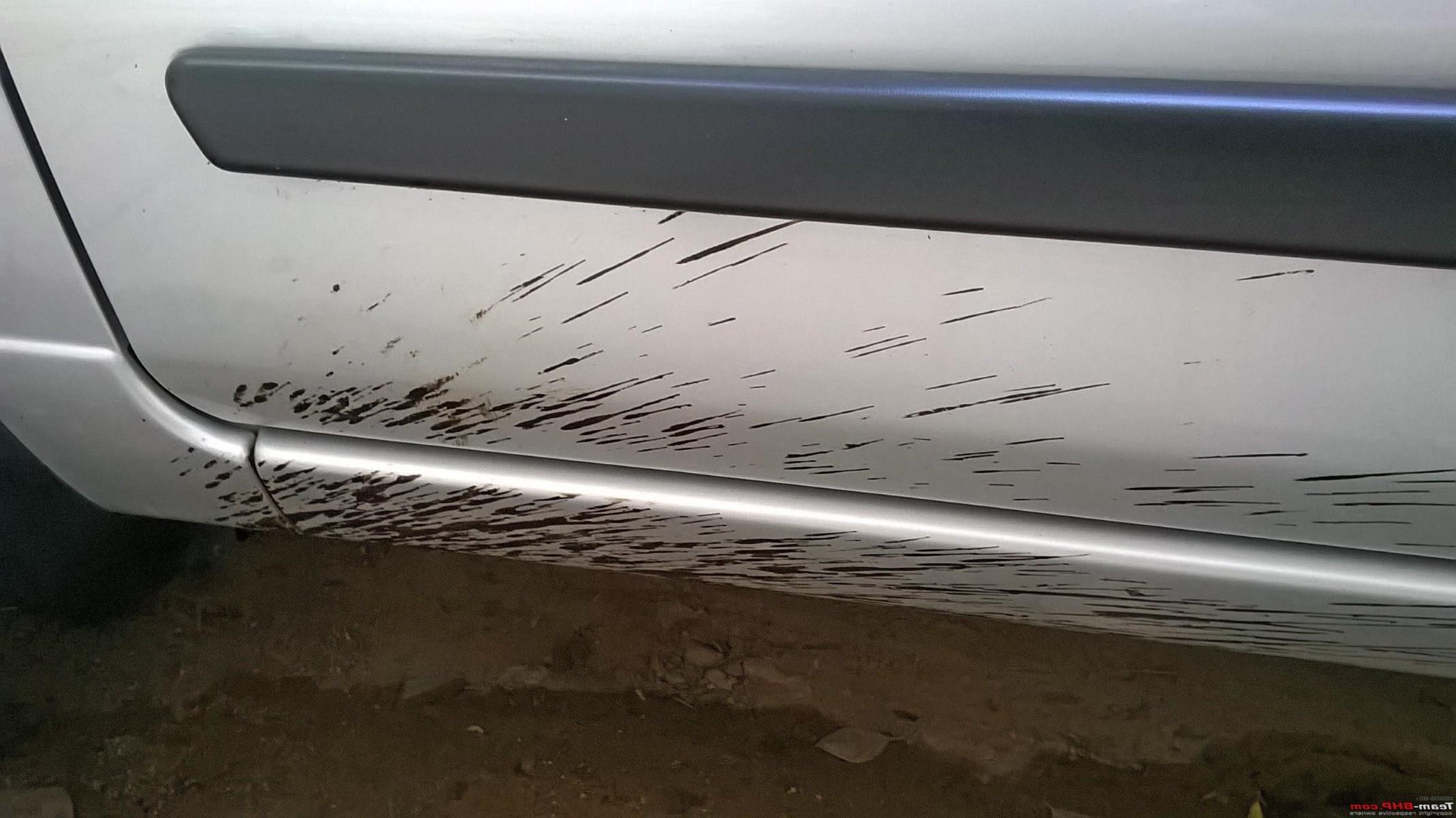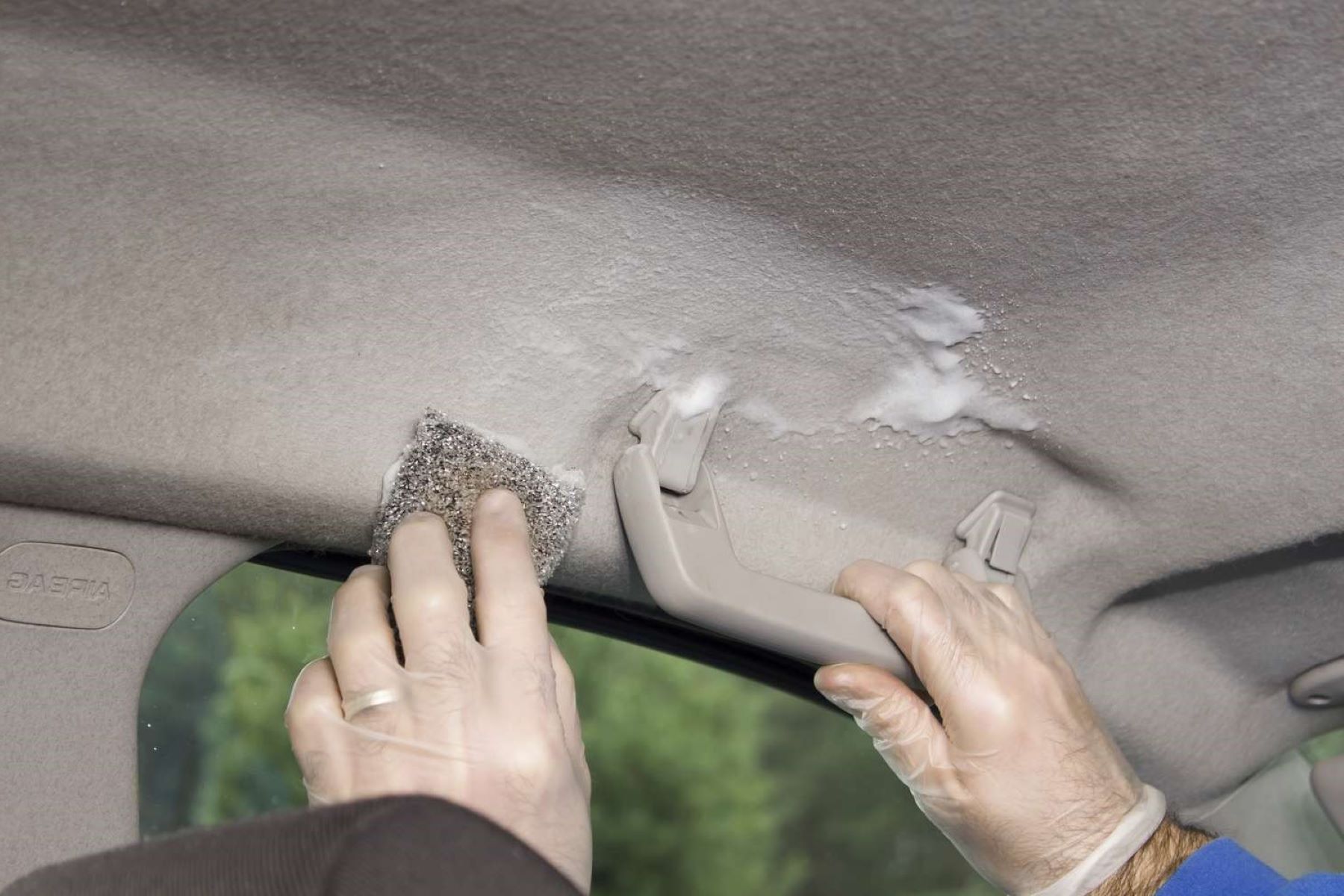Home>Automotive>How To Get Cigarette Smell Out Of Car


Automotive
How To Get Cigarette Smell Out Of Car
Published: February 26, 2024
Learn effective ways to eliminate cigarette smell from your car with these automotive tips. Get rid of the unpleasant odor and enjoy a fresh-smelling vehicle.
(Many of the links in this article redirect to a specific reviewed product. Your purchase of these products through affiliate links helps to generate commission for Regretless.com, at no extra cost. Learn more)
Table of Contents
Introduction
Cigarette smoke can linger in a car long after the last puff, creating an unpleasant and persistent odor that can be challenging to eliminate. Whether you've recently purchased a used car with a lingering smoke smell or you're a former smoker looking to banish the odor from your vehicle, understanding the source of the smell and effective methods for removal is crucial. This comprehensive guide will provide you with practical tips and techniques to effectively rid your car of cigarette smell, ensuring a fresh and inviting interior for you and your passengers.
The pervasive nature of cigarette odor in cars can be attributed to the porous materials commonly found in vehicle interiors, such as upholstery, carpets, and headliners. These materials readily absorb and trap the volatile compounds present in cigarette smoke, leading to a stubborn and pervasive smell that can be challenging to eradicate. Additionally, the ventilation system of the car can distribute the odor throughout the interior, further complicating the removal process.
By gaining insight into the mechanisms behind the persistence of cigarette smell in cars, you'll be better equipped to tackle the issue head-on. From addressing the odor trapped in upholstery to targeting the lingering scent within the air conditioning system, this guide will walk you through the step-by-step process of effectively neutralizing and eliminating cigarette odor from your car. Furthermore, we'll explore preventive measures to help you maintain a smoke-free environment within your vehicle, ensuring that the unpleasant odor doesn't make a comeback.
With a combination of practical strategies and a clear understanding of the sources of cigarette smell in cars, you'll be well on your way to enjoying a fresh and inviting driving experience. Let's delve into the intricacies of cigarette odor removal and equip you with the knowledge and techniques needed to restore your car to its odor-free state.
Read more: How To Get Vaseline Out Of Clothes
Understanding the source of cigarette smell in cars
Cigarette smoke permeates the interior of a car through a complex interplay of factors, leading to the stubborn and pervasive odor that lingers long after the last cigarette has been extinguished. The porous nature of the materials commonly found in car interiors, such as upholstery, carpets, and headliners, plays a significant role in trapping and retaining the volatile compounds present in cigarette smoke. These materials readily absorb the smoke particles, allowing the odor to become deeply embedded within the fabric and padding.
Moreover, the ventilation system of the car, including the air conditioning system and vents, can act as a conduit for the distribution of cigarette odor throughout the interior. When smoke particles infiltrate the ventilation system, they can adhere to the surfaces and components, perpetuating the circulation of the unpleasant smell each time the system is activated.
The chemical composition of cigarette smoke further exacerbates the challenge of eliminating the odor from cars. The smoke contains a complex mixture of volatile organic compounds (VOCs), including nicotine, tar, and other chemicals that contribute to the distinctive and persistent smell. These VOCs can adhere to surfaces and materials, forming a resilient film that releases the odor over time, even after the initial source of the smoke has been removed.
Additionally, the prolonged exposure to cigarette smoke can lead to the impregnation of the odor into the various components of the car, including the dashboard, steering wheel, and door panels. This widespread infiltration makes it essential to adopt a comprehensive approach to odor removal, addressing not only the visible surfaces but also the hidden recesses where the odor may linger.
Understanding the multifaceted sources of cigarette smell in cars is crucial for devising effective strategies to neutralize and eliminate the odor. By recognizing the mechanisms through which the smoke permeates and lingers within the vehicle, you can tailor your approach to address each aspect comprehensively, ensuring a thorough and lasting solution to the persistent cigarette odor in your car.
Removing cigarette smell from car upholstery
Cigarette smoke has a remarkable ability to permeate and linger within the upholstery of a car, creating a persistent and unpleasant odor. To effectively eliminate the entrenched smell from the upholstery, a systematic approach that targets the source of the odor is essential.
1. Thorough Vacuuming
Commence the odor removal process by thoroughly vacuuming the upholstery, including the seats, carpets, and any other fabric surfaces. Use a vacuum cleaner with a brush attachment to dislodge and extract the trapped smoke particles and debris from the fabric fibers. Pay particular attention to the seams, crevices, and areas where smoke residue is likely to accumulate.
2. Upholstery Cleaner Application
Select a high-quality upholstery cleaner designed to neutralize odors and remove stains. Apply the cleaner to the affected areas according to the manufacturer's instructions, ensuring complete coverage of the upholstery. Use a soft-bristled brush to gently agitate the cleaner into the fabric, effectively targeting the embedded smoke particles and odor-causing compounds.
Read more: How To Get Eyelash Out Of Eye
3. Steam Cleaning
Consider utilizing a steam cleaner to further penetrate the upholstery and eradicate the lingering cigarette odor. The application of steam can help dislodge and extract deeply embedded smoke particles, while the heat aids in neutralizing the volatile compounds responsible for the persistent smell. Ensure that the steam cleaner is suitable for use on car upholstery and follow the recommended guidelines for optimal results.
4. Odor Neutralizing Spray
After cleaning and treating the upholstery, apply an odor-neutralizing spray specifically formulated for car interiors. These sprays are designed to combat and neutralize the lingering smoke odor, leaving behind a fresh and clean scent. Thoroughly mist the upholstery with the neutralizing spray, allowing it to permeate the fabric and effectively counteract the residual cigarette smell.
5. Sunlight and Fresh Air
Once the upholstery has been treated, allow the car to air out in a well-ventilated area, preferably in direct sunlight. Sunlight and fresh air can work in tandem to further dissipate the remaining odor, while the natural UV rays help to break down odor-causing compounds. Leave the windows and doors open to facilitate the circulation of air, aiding in the complete removal of the cigarette smell from the upholstery.
By diligently following these steps and employing a combination of thorough cleaning, targeted treatments, and natural remedies, you can effectively eliminate the cigarette smell from the car upholstery. This comprehensive approach not only addresses the visible signs of odor but also targets the embedded smoke particles, ensuring a fresh and inviting interior for your driving pleasure.
Eliminating cigarette odor from car vents and air conditioning system
The ventilation system and air conditioning components of a car can serve as reservoirs for the distribution of cigarette odor, perpetuating the unpleasant smell throughout the interior. To effectively neutralize and eliminate the lingering odor from the car vents and air conditioning system, a targeted approach is essential.
-
Cabin Air Filter Replacement: Commence the odor elimination process by replacing the cabin air filter. The filter, responsible for trapping airborne particles and odors, can become saturated with cigarette smoke residue over time. By installing a new, clean filter, you can prevent the recirculation of the odor and improve the air quality within the car.
-
Vent Cleaning: Utilize a specialized vent cleaning tool or a narrow, flexible brush to dislodge and remove the accumulated debris and smoke residue from the air vents. Gently insert the tool into the vents and maneuver it to access the interior surfaces, effectively clearing out the trapped particles that contribute to the persistent odor.
-
Air Duct Sanitization: Consider using an air duct sanitizer to treat the ventilation system and air ducts. These sanitizers are designed to neutralize odors and eliminate microbial contaminants within the ductwork, effectively targeting the source of the cigarette smell. Follow the manufacturer's instructions for application and ensure thorough coverage of the air ducts.
-
A/C Evaporator Cleaning: The A/C evaporator can harbor cigarette odor and contribute to the circulation of the smell each time the air conditioning system is activated. Utilize a foaming A/C evaporator cleaner to remove the accumulated residue and odor from the evaporator coils. This targeted cleaning process can significantly reduce the presence of the lingering cigarette smell within the air conditioning system.
-
Ozone Treatment: Consider employing an ozone generator to neutralize the remaining odor within the ventilation system and car interior. Ozone treatment can effectively break down and neutralize the volatile compounds responsible for the persistent smell, providing a comprehensive solution to the eradication of cigarette odor.
By systematically addressing the sources of the cigarette odor within the car vents and air conditioning system, you can effectively neutralize and eliminate the persistent smell, ensuring a fresh and inviting interior for your driving pleasure. This targeted approach not only improves the air quality within the car but also contributes to a more pleasant and enjoyable driving experience.
Read more: How To Get A Broken Spark Plug Out
Getting rid of cigarette smell from car carpets and floor mats
Cigarette smoke has a remarkable ability to permeate and linger within the carpets and floor mats of a car, creating a persistent and unpleasant odor that can be challenging to eliminate. To effectively rid your car of the entrenched cigarette smell from these fabric surfaces, a systematic and thorough approach is essential.
-
Deep Cleaning: Commence the odor removal process by thoroughly vacuuming the carpets and floor mats to dislodge and extract the trapped smoke particles and debris from the fabric fibers. Use a vacuum cleaner with a brush attachment to ensure comprehensive coverage and effective removal of the embedded smoke residue.
-
Carpet and Fabric Cleaner Application: Select a high-quality carpet and fabric cleaner designed to neutralize odors and remove stains. Apply the cleaner to the affected areas according to the manufacturer's instructions, ensuring thorough saturation of the carpets and floor mats. Use a soft-bristled brush to gently agitate the cleaner into the fabric, effectively targeting the embedded smoke particles and odor-causing compounds.
-
Steam Cleaning: Consider utilizing a steam cleaner to further penetrate the carpets and floor mats, effectively eradicating the lingering cigarette odor. The application of steam can help dislodge and extract deeply embedded smoke particles, while the heat aids in neutralizing the volatile compounds responsible for the persistent smell. Ensure that the steam cleaner is suitable for use on car fabrics and follow the recommended guidelines for optimal results.
-
Odor Neutralizing Sprays: After cleaning and treating the carpets and floor mats, apply an odor-neutralizing spray specifically formulated for car interiors. These sprays are designed to combat and neutralize the lingering smoke odor, leaving behind a fresh and clean scent. Thoroughly mist the carpets and floor mats with the neutralizing spray, allowing it to permeate the fabric and effectively counteract the residual cigarette smell.
-
Sunlight and Fresh Air: Once the carpets and floor mats have been treated, allow the car to air out in a well-ventilated area, preferably in direct sunlight. Sunlight and fresh air can work in tandem to further dissipate the remaining odor, while the natural UV rays help to break down odor-causing compounds. Leave the windows and doors open to facilitate the circulation of air, aiding in the complete removal of the cigarette smell from the fabric surfaces.
By diligently following these steps and employing a combination of thorough cleaning, targeted treatments, and natural remedies, you can effectively eliminate the cigarette smell from the car carpets and floor mats. This comprehensive approach not only addresses the visible signs of odor but also targets the embedded smoke particles, ensuring a fresh and inviting interior for your driving pleasure.
Preventing future cigarette smell in your car
Preventing the recurrence of cigarette smell in your car involves proactive measures aimed at maintaining a smoke-free environment within the vehicle. By implementing preventive strategies, you can effectively safeguard your car against the infiltration of cigarette odor, ensuring a fresh and inviting interior for the long term.
1. Establish a Smoke-Free Policy
Set clear guidelines regarding smoking in your car, whether for personal use or when transporting passengers. Communicate and enforce a strict smoke-free policy to prevent the introduction of cigarette odor into the vehicle. By establishing and upholding this policy, you can significantly reduce the risk of future smoke-related odors.
2. Regular Cleaning and Maintenance
Adopt a routine cleaning schedule for your car's interior, including the upholstery, carpets, and fabric surfaces. Regular vacuuming, spot cleaning, and maintenance of the ventilation system can help prevent the accumulation of smoke residue and minimize the potential for lingering odors. Additionally, consider using air fresheners or odor-neutralizing products to maintain a fresh and pleasant interior ambiance.
Read more: How To Get Heat Stains Out Of Wood
3. Upholstery Protection
Invest in protective treatments for your car's upholstery and fabric surfaces to create a barrier against smoke absorption. Fabric protectors and sealants can help repel and resist the penetration of smoke particles, reducing the likelihood of persistent odor buildup. By proactively safeguarding the upholstery, you can mitigate the impact of cigarette smoke and maintain a clean and odor-free interior.
4. Smoking Alternatives
Encourage the use of smoking alternatives, such as electronic cigarettes or vaporizers, as a smoke-free option within the car. By promoting the adoption of alternative smoking methods, you can minimize the introduction of traditional cigarette smoke and its associated odor, contributing to a more pleasant and odor-free driving environment.
5. Ventilation and Air Quality
Prioritize the ventilation and air quality within your car by ensuring regular maintenance of the cabin air filter and ventilation system. Clean and replace the cabin air filter as recommended by the manufacturer to prevent the accumulation of smoke residue and maintain optimal air quality. Additionally, consider using air purifiers or ionizers to enhance the overall air quality and reduce the potential for lingering odors.
By proactively implementing these preventive measures, you can effectively safeguard your car against future cigarette smell, maintaining a fresh and inviting interior for your driving pleasure. These proactive strategies not only contribute to a smoke-free environment but also ensure a pleasant and enjoyable driving experience for you and your passengers.












